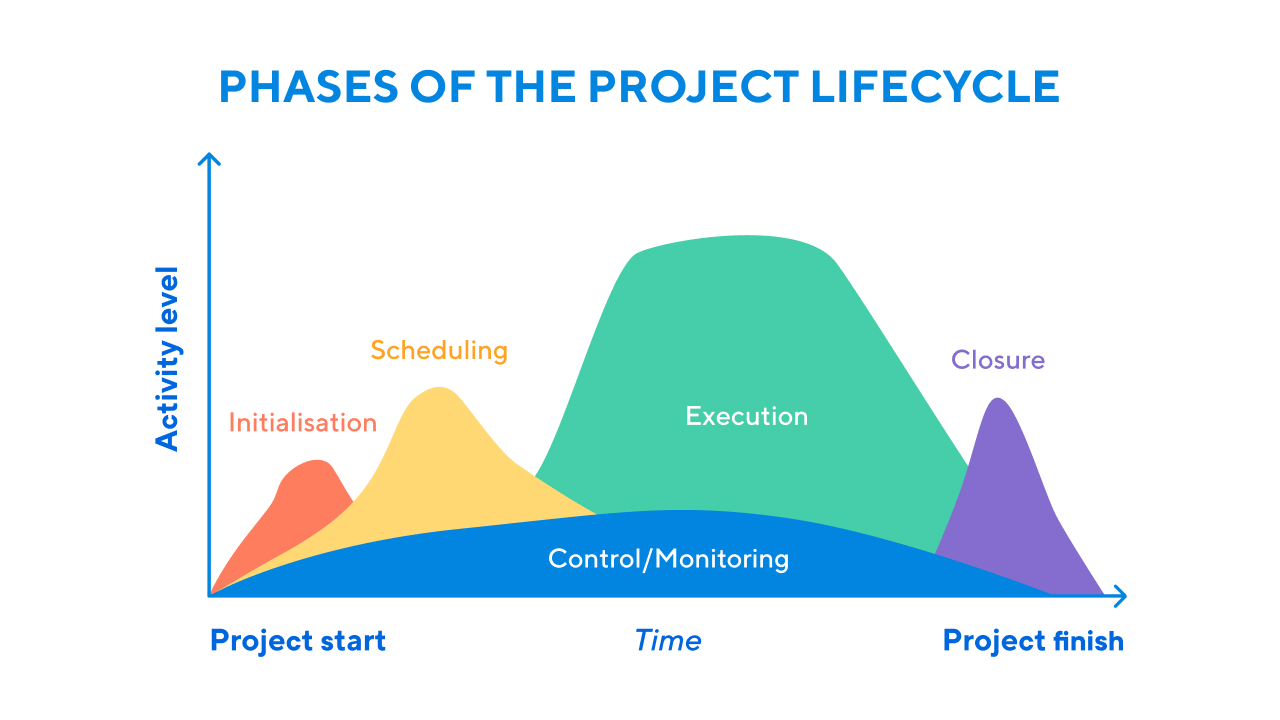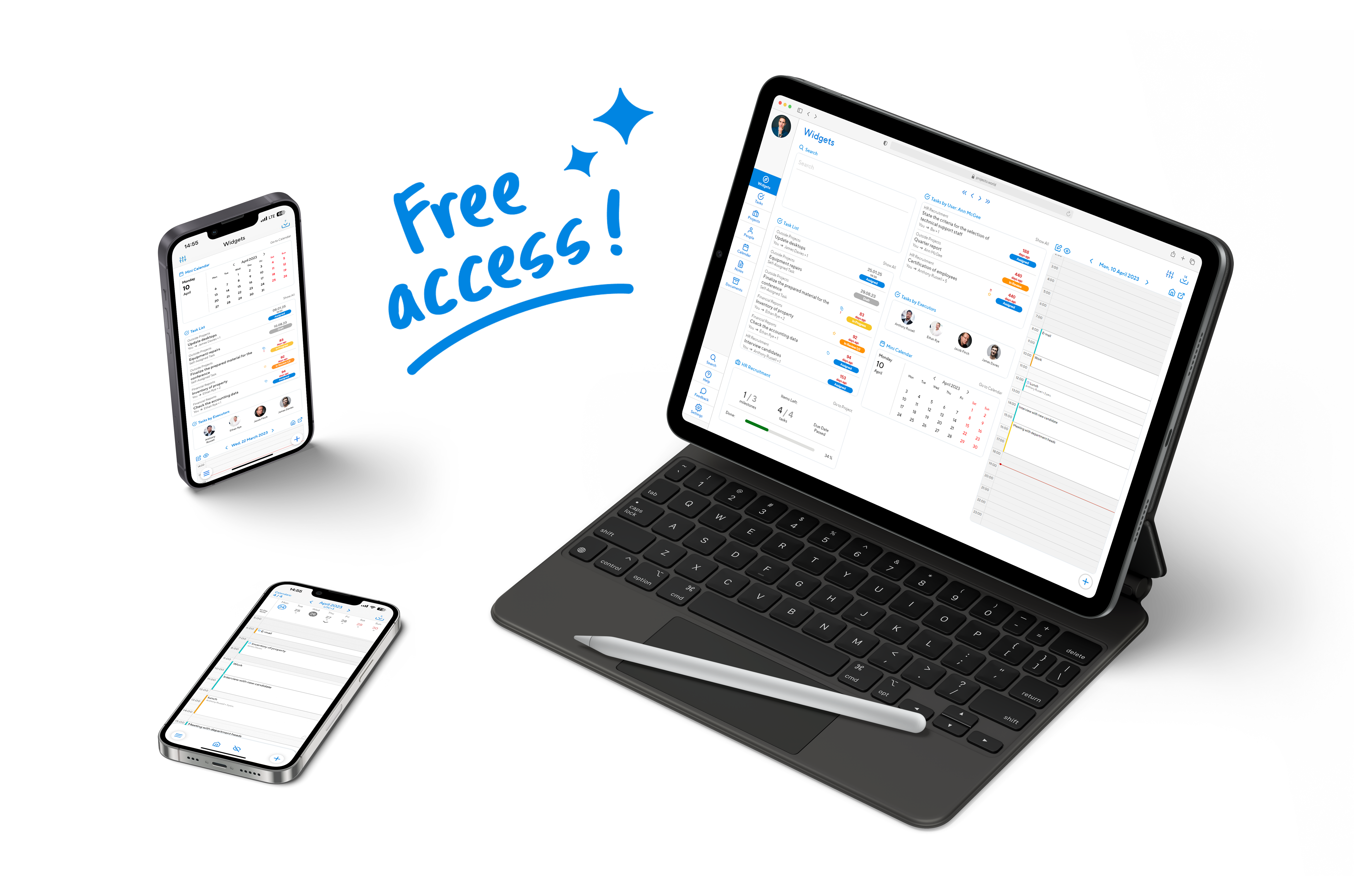In some agile methodologies, projects are seen as an infinitely improving process. But even there, there are stages of development that every project must go through. A project does not exist indefinitely: either the flow of funding from the investor runs out, or the users lose interest, or the problems it solves become less relevant.
There are many reasons for a project to close, and we have discussed the most likely problems in a separate article — Why Startups Fail.
Below, we will look in detail at the main stages and phases of the project lifecycle.
Stages of project development
In terms of general principles that can be applied to any type of project, all projects go through the following stages:
- Initial stage — this may include the stage when the idea for the project is born — its initialisation, planning and justification.
- Implementation phase — direct work on the project.
- Completion stage — for example, when the project is fully completed, handed over for customer service or completely redesigned, i.e. transformed into another project for various reasons.
Some academic sources describe the stages of the project life cycle as follows:
- Initialisation (this includes justification).
- Planning.
- Execution.
- Completion.
For ease of understanding, we can generalise: every project has a beginning and an end, and the core work of a project is its life.
The Project Management Institute International (PMI), which was involved in the development of the PMBOK manual, identifies 5 key processes that are inherent in project lifecycles:
- Initialisation.
- Planning.
- Execution.
- Control/Monitoring.
- Closure.
The group of processes that combine control and monitoring deserves special attention. Control is assumed to run in parallel with all other processes, from start to finish.
You can see what this looks like in the diagram below.

What’s remarkable is that the implementation doesn’t just look like a plateau. This is roughly how it should be in any normal project. At the beginning of the project, activity increases, then it reaches a stable level (this is the plateau), and at the end of the project it decreases.
If the project is an investment project, the phases will be slightly different:
- Research — finding and attracting investors.
- Investment — the direct receipt of funds.
- Operating phase — will include the above phases of a classic project.
- Post-investment evaluation of efficiency.
Different project development models
In reality, it is rarely possible to present the life of a project in a linear way, although it is easier to perceive it that way.
This is how a project usually develops:
- Spiral — the development of the project occurs with a certain cyclicality, but each cycle is unique in its own way, because at each turn you get new resources and experience, so the new turn becomes stronger and gets a bigger scope.
- Incremental, or ‘step-by-step’, each new stage of development is an increment, rigidly linked to specific time intervals and levels of funding. The incremental model may not have a linear or spiral structure, but each new stage necessarily builds on the achievements and results of the previous stage.
Life cycle stages and different project management methodologies
We have reviewed the most popular and sought-after methodologies separately, with all their pros and cons — the Top 10 Project Management Methodologies.
Many methodologies, especially if they are agile, are not tied to the life stages of a project. They are designed for an unlimited number of iterations, each of which may have new tasks and starting conditions.
So how do they fit into the linear project life-cycle diagram (see ‘Cascade Management Model — Waterfall‘)? Quite simply.
The internal pattern of each iteration simply correlates with the overall progress:
- The planning and justification phases take place either as part of the first iterations or are done before the immediate start of the project (before moving to a particular framework or methodology).
- Any agile methodology does not refer to the project as a whole, but directly to the project implementation phase (i.e. cycles and iterations are initiated within the main project life cycle — the plateau phase). In addition, many methodologies ‘break down’ the initialisation phase with planning into smaller components. For example, planning takes place over a shorter period of time and is discussed and implemented in one of the meetings before a new development iteration is launched.
- The planning of ongoing project tasks within a cycle is still based on a cross-cutting list of common tasks selected for implementation. In other words, they are steps in the right direction. It’s just that the cycle of working on them allows you to change direction much more flexibly and quickly, if necessary, to revise the list of current tasks.
What helps to get the stages and lifecycle of a project right?
The answer is simple: good planning and good project management. The clearer and better you formulate the tasks, the better you manage the initialisation phase (team formation and selection, integration, networking, etc.), the easier the rest of the work will be.
Of course, automation systems and specialised software can help to facilitate planning, control and communication (which are the main pillars of any project): task manager software, BPM system, corporate messenger, shared calendars, etc.
It is even better to have all the main functions for team and project management in one place, as is the case with Projecto.
Here you can create and maintain projects of any complexity, formulate the optimal staffing plan and organisational structure (in a special constructor), describe all tasks and distribute them to the executors, get instant feedback and monitor the overall progress, send a notification to an employee about a new task (including mobile application), view the current tasks of each subordinate, communicate necessary information, discuss important issues, store management documents, customer and employee contacts, and much more. And that’s just a few of the features implemented in the Projecto cloud system.
